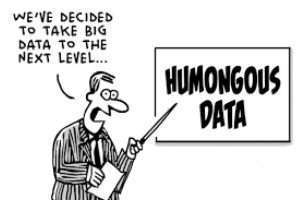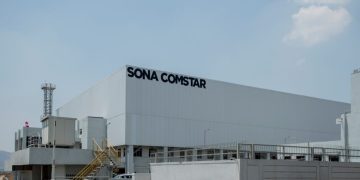“First, have a definite, clear practical ideal; a goal, an objective. Second, have the necessary means to achieve your ends; wisdom, money, materials, and methods. Third, adjust all your means to that end”
– Aristotle
A tool is an object that can extend an individual’s ability to modify features of the surrounding environment or help them accomplish a particular task. In a way, a tool is a means to achieve the desired objective. In this article I refer to tool not only as a physical device but as anything (may it be a process, mindset etc) that if used well can help the system under consideration to achieve more of its desired objective.
Before we decide what tool to use, it is imperative that we have a clear understanding of what’s the objective we are trying to achieve. We often tend to go with the ‘best’ known tools available without really defining the objective we are trying to achieve.
Let’s take any automobile repair business as an example or any for profit making business – What’s the ultimate objective? How do we judge if the business is successful or not? A very simple measure is that the company should be making money now as well as in the future. Only if the company can achieve this objective, will it be able to delivery higher value to all its stakeholders and society in general and achieve its vision/mission.
There are just three key measures to know if the company is really making money and if it will continue to make money in future. Any decision to use the tool should be taken only after considering the impact on these key measures.
Key Measures:
l Throughput (T): The rate at which the company generates money through sales.
Throughput = Sales – Truly variable cost (like raw materials, commissions on sales, logistics etc)
l Inventory (I): The money the company spends on things it intends to turn into Throughput
l Operating expense (OE): The money the company spends turning Inventory into Throughput
As long as, total throughput that a company is generating is increasing and the ratio of Throughput to Inventory (T/I) and Throughput to Operating Expense (T/OE) is increasing, the company is on the right track. Any tools that the management uses to manage the business should ensure that above three parameters are positively impacted – if not, we are not using the right tool!! It doesn’t matter how good a tool is.
Business leaders often use one of the following seven tools to improve their business performance. Sadly, the reason they use these tools are because they are good and they are available but often misses the point to check if these tools are really helping businesses make more money or not.
l Investment: This is one tool that is highly abused. The thought is that any problem that exists in business can be solved by pouring more money – adding machineries, adding more people, doing more marketing etc. However, what we fail to realise is that no matter how many resources we have if we don’t know how to use them it will never be enough. The problem is that we believe we are already as good as we can get at utilising all our resources.
l Training & Communication: The problem is that we believe that there is lack of information and hence people need more information to improve or change their behaviour. Instead, the design of the system should be such that it makes it natural and easy for people to make choices and produce results we want. In most workshops, you would see there are loads of quotes related to ‘quality’ – that explains why quality is important, everyone is responsible for quality etc. The problem of poor quality is not that people don’t understand the need to improve quality but rather the systems are designed in such a way that it inevitably leads to poor quality.
improve or change their behaviour. Instead, the design of the system should be such that it makes it natural and easy for people to make choices and produce results we want. In most workshops, you would see there are loads of quotes related to ‘quality’ – that explains why quality is important, everyone is responsible for quality etc. The problem of poor quality is not that people don’t understand the need to improve quality but rather the systems are designed in such a way that it inevitably leads to poor quality.
l Look for More Data: Data are words and numbers – there are tons & tons of data that’s already available. The more data we provide the less is our ability to comprehend. There is a difference between having data and having understanding. More data does not mean more understanding. Data can be an incredibly powerful tool if used the right way or it can drown one in noise. The problem is that we believe the more data we have, the more we will uncover reality and deepen our understanding. The key is to be very specific about the question you are trying to answer and then look for the data.
l Reorganisation: The problem is that we believe we need authority over resources to get alignment. Moving the problem around does not solve the problem. The real problem is to achieve synchronisation and we need to find what is stopping the synchronisations instead of just reorganising things.
l Technology: We all use technology – sometimes we are allured by complex technologies. Somehow, we think the more complex the technology is, the better it is. The problem is we believe we need a new capability or tool. We have lost our ability to understand the problem and hope that technology will solve all the problem. Earlier days when you wanted hammer, you exactly knew what hammer can do. Now a days, we simply use technology for the sake of it. Define and solve the business problem first, then determine if technology can amplify the solution.
l Strategic Planning: If one strategy does not work the problem we think is in strategy and tends to change the strategy. The problem is we believe we need a new idea. Having a strategy is critical but the essence of leadership happens in execution. The key is to define the problem we are trying to solve and then focus on excellent execution.
l Bring More Control: The problem is we believe that problem is with the people. Perfect what is already under your stewardship so you can expand your circle of influence over time.
My advice to the businesses, who are not making money and are frantically using all the available tools with the hope that one of it will work will be – “Stop – think – find your constraint and focus all your attention to find the right tool that will help you to exploit the constraint”
 Reference:
Reference:
Goal by Dr Eliyahu M Goldratt and Jeff Cox
Stop Decorating The Fish by Yishai Ashlag & Kristen Cox
Akshat Agrawal
BE. PGPM
Project Director
Trained & certified in thinking & application of Theory of Constraints (TOC)
Goldratt Group



























































